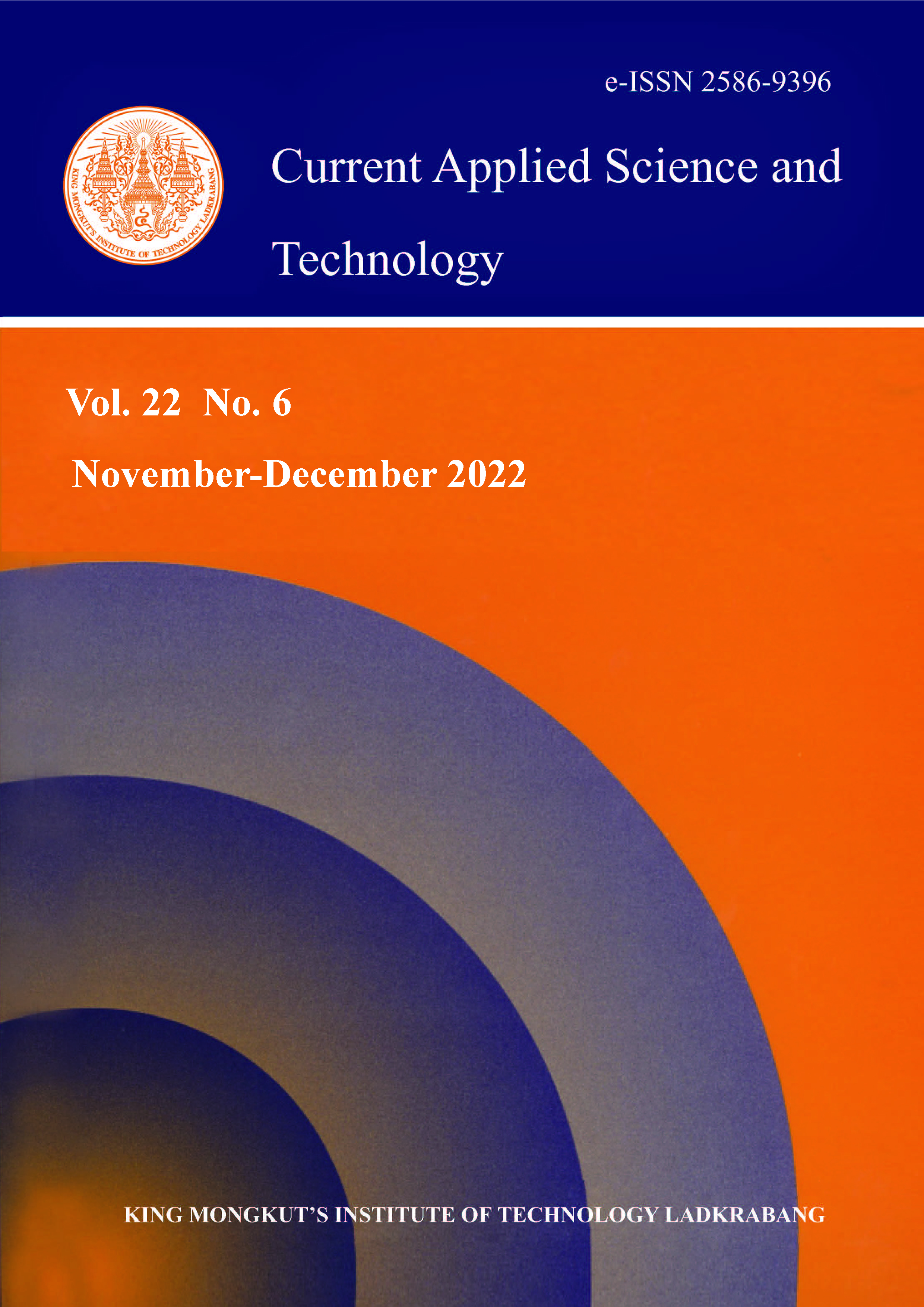The Calculation of Photon Interactions in Gd2YAl2Ga3O12 compound by the Phy-X Software Compared with WinXCom Program
Main Article Content
Abstract
The photon interactions in Gd2YAl2Ga3O12 compound were studied in this work. The interaction parameters, such as total mass attenuation coefficient (μm), effective atomic number (Zeff), effective electron density (Neff), mean free path (MFP), half-value layer (HVL) and tenth-value layer (TVL) were computed as a function of energy between 1 keV-100 GeV, while the atomic equivalent (Zeq) and the buildup factors were calculated with 0.015 MeV-15 MeV energy range using Phy-X software. Moreover, all obtained values were compared with calculated ones using WinXCom program over the same energy range. Both calculation processes represent the μm reduction by following the energy increment. The Zeffand Neff show a similar trend depending on the energy range and have some discrete values at low energy. These discontinuous values correspond to the absorption edges which were also found in the μm calculation at same energy. The trends of MFP, HVL, and TVL are similar in that their highest values appear in the middle energy range with main interaction being Compton scattering. The buildup factors represent the multiple scattering of photons in materials and air with the main peaks in middle energy range.
Keywords: radiation interaction; WinXCom program; Phy-X software
*Corresponding author: (+66) 822156439
E-mail: eakgapon_9@hotmail.com
Article Details

This work is licensed under a Creative Commons Attribution-NonCommercial-NoDerivatives 4.0 International License.
Copyright Transfer Statement
The copyright of this article is transferred to Current Applied Science and Technology journal with effect if and when the article is accepted for publication. The copyright transfer covers the exclusive right to reproduce and distribute the article, including reprints, translations, photographic reproductions, electronic form (offline, online) or any other reproductions of similar nature.
The author warrants that this contribution is original and that he/she has full power to make this grant. The author signs for and accepts responsibility for releasing this material on behalf of any and all co-authors.
Here is the link for download: Copyright transfer form.pdf
References
Sreebunpeng, K., Chewpraditkul, W. and Nikl, M. 2014. Luminescence and scintillation properties of advanced Lu3Al5O12:Pr3+ single crystal scintillators. Radiation Measurements, 60, 42-45.
Çullu, M. and Bakırhan, E., 2018. Investigation of radiation absorption coefficients of lead-zinc mine waste rock mixed heavy concrete at 662-1460 keV energy range. Construction and Building Materials, 173, 17-27.
Phan, Q.V., Kim, H.J., Rooh, G. and Kim S.H., 2018. Tl2ZrCl6 crystal: Efficient scintillator for X- and g-ray spectroscopies. Journal of Alloys and Compounds, 766, 326-330.
Alorfi, H.S., Hussein, M. and Tijani, S.A., 2020. The use of rocks in lieu of bricks and concrete as radiation shielding barriers at low gamma and nuclear medicine energies. Construction and Building Materials, 251, 118908, https://doi.org/10.1016/j.conbuildmat.2020.118908.
Cheewasukhanont, W., Limkitjaroenporn, P., Kothan, S., Kedkaew, C. and Kaewkhao, J., 2020. The effect of particle size on radiation shielding properties for bismuth borosilicate glass. Radiation Physics and Chemistry, 172(1), 108791, https://doi.org/10.1016/j.radphyschem.2020.108791.
Gerward, L., Guilbert, N., Jensen, K.B. and Levring, H., 2004. WinXCom—a program for calculating X-ray attenuation coefficients. Radiation Physics and Chemistry, 71, 653-654.
Şakar, E., Fırat Özpolat, Ö., Alım, B., Sayyed, M.I. and Kurudirek, M., 2020. Phy-X/PSD: Development of a user-friendly online software for calculation of parameters relevant to radiation shielding and dosimetry. Radiation Physics and Chemistry, 166, https://doi.org/10.1016/j.radphyschem.2019. 108496.
Chewpraditkul, W., Sakthong, O., Pattanaboonmee, N., Chewpraditkul, W., Szczesniak, T., Swiderski, L., Moszynski, M., Kamada, K., Yoshikawa, A. and Nikl, M., 2017. Optical and scintillation characteristics of Gd2YAl2Ga3O12:Ce and Lu2YAl2Ga3O12:Ce single crystals. Journal of Crystal Growth, 468, 395-398.
Glenn, E.K., 2000. Radiation Detection and Measurement. New York: John Wiley & Sons.
Han, I. and Demir, L., 2009. Mass attenuation coefficients, effective atomic and electron numbers of Ti and Ni alloys. Radiation Measurements, 44, 289-294.
Salehi, D., Sardari, D. and Jozani, M.S., 2015. A study of energy absorption and exposure buildup factors in natural uranium. Advanced Materials Research, 1, 23-30.
Olarinoye, I.O., Odiaga, R.I. and Paul S., 2019. EXABCal: A program for calculating photon exposure and energy absorption buildup factors. Heliyon, 5, https://doi.org/10.1016/j.heliyon.2019.e02017.






